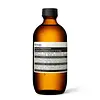What's inside
What's inside
 Key Ingredients
Key Ingredients

 Benefits
Benefits

 Concerns
Concerns

 Ingredients Side-by-side
Ingredients Side-by-side

Water
Skin ConditioningOlive Oil PEG-7 Esters
EmollientAmmonium Laureth Sulfate
CleansingGlycerin
HumectantPEG-150 Distearate
EmulsifyingAloe Barbadensis Leaf Juice
Skin ConditioningCitrus Aurantium Bergamia Fruit Oil
MaskingSea Salt
AbrasiveCoco-Betaine
CleansingRosmarinus Officinalis Leaf Oil
MaskingCamellia Sinensis Leaf Extract
AntimicrobialAnthemis Nobilis Flower Oil
MaskingMethylchloroisothiazolinone
PreservativeMethylisothiazolinone
PreservativeLimonene
PerfumingLinalool
PerfumingWater, Olive Oil PEG-7 Esters, Ammonium Laureth Sulfate, Glycerin, PEG-150 Distearate, Aloe Barbadensis Leaf Juice, Citrus Aurantium Bergamia Fruit Oil, Sea Salt, Coco-Betaine, Rosmarinus Officinalis Leaf Oil, Camellia Sinensis Leaf Extract, Anthemis Nobilis Flower Oil, Methylchloroisothiazolinone, Methylisothiazolinone, Limonene, Linalool
Water
Skin ConditioningSodium Laureth Sulfate
CleansingOlive Oil PEG-7 Esters
EmollientSodium PEG-7 Olive Oil Carboxylate
EmulsifyingCoco-Betaine
CleansingPotassium Lactate
BufferingPEG-120 Methyl Glucose Dioleate
EmulsifyingSodium Citrate
BufferingLactic Acid
BufferingLavandula Angustifolia Oil
MaskingGlycerin
HumectantSimmondsia Chinensis Seed Oil
EmollientRibes Nigrum Seed Oil
EmollientOrmenis Multicaulis Oil
MaskingChamomilla Recutita Flower Oil
MaskingGlycyrrhiza Glabra Root Extract
BleachingCarum Petroselinum Seed Oil
MaskingMethylchloroisothiazolinone
PreservativeMethylisothiazolinone
PreservativeLinalool
PerfumingLimonene
PerfumingWater, Sodium Laureth Sulfate, Olive Oil PEG-7 Esters, Sodium PEG-7 Olive Oil Carboxylate, Coco-Betaine, Potassium Lactate, PEG-120 Methyl Glucose Dioleate, Sodium Citrate, Lactic Acid, Lavandula Angustifolia Oil, Glycerin, Simmondsia Chinensis Seed Oil, Ribes Nigrum Seed Oil, Ormenis Multicaulis Oil, Chamomilla Recutita Flower Oil, Glycyrrhiza Glabra Root Extract, Carum Petroselinum Seed Oil, Methylchloroisothiazolinone, Methylisothiazolinone, Linalool, Limonene
 Reviews
Reviews

Ingredients Explained
These ingredients are found in both products.
Ingredients higher up in an ingredient list are typically present in a larger amount.
Coco-Betaine is the natural version of Cocamidopropyl Betaine. It is often derived from coconuts.
Coco-Betaine is a surfactant, meaning it helps remove dirt and oil from the skin.
Glycerin is already naturally found in your skin. It helps moisturize and protect your skin.
A study from 2016 found glycerin to be more effective as a humectant than AHAs and hyaluronic acid.
As a humectant, it helps the skin stay hydrated by pulling moisture to your skin. The low molecular weight of glycerin allows it to pull moisture into the deeper layers of your skin.
Hydrated skin improves your skin barrier; Your skin barrier helps protect against irritants and bacteria.
Glycerin has also been found to have antimicrobial and antiviral properties. Due to these properties, glycerin is often used in wound and burn treatments.
In cosmetics, glycerin is usually derived from plants such as soybean or palm. However, it can also be sourced from animals, such as tallow or animal fat.
This ingredient is organic, colorless, odorless, and non-toxic.
Glycerin is the name for this ingredient in American English. British English uses Glycerol/Glycerine.
Learn more about GlycerinLimonene is a fragrance that adds scent and taste to a formulation.
It's found in the peel oil of citrus fruits and other plants such as lavender and eucalyptus. The scent of limonene is generally described as "sweet citrus".
Limonene acts as an antioxidant, meaning it helps neutralize free radicals.
When exposed to air, oxidized limonene may sensitize the skin. Because of this, limonene is often avoided by people with sensitive skin.
The term 'fragrance' is not regulated in many countries. In many cases, it is up to the brand to define this term. For instance, many brands choose to label themselves as "fragrance-free" because they are not using synthetic fragrances. However, their products may still contain ingredients such as essential oils that are considered a fragrance.
Learn more about LimoneneLinalool is a fragrance and helps add scent to products. It's derived from common plants such as cinnamon, mint, citrus, and lavender.
Like Limonene, this ingredient oxidizes when exposed to air. Oxidized linalool can cause allergies and skin sensitivity.
This ingredient has a scent that is floral, spicy tropical, and citrus-like.
Learn more about LinaloolMCI is a preservative and known skin-irritant. It has anti-bacteria anti-fungal properties.
Studies spanning several decades have shown this ingredient to cause skin irritation and allergies.
MCI is commonly combined with methylisothiazolinone (MI). Other names for this mixture include Kathon CG and Euxyl K 100.
The use of this ingredient varies around the world:
Learn more about MethylchloroisothiazolinoneMI is a preservative and known skin irritant. In the past, MI was used for its ability to prevent bacteria, yeast, and fungi growth in low doses.
Nowadays, you'll most likely see MI combined with Methylchloroisothiazolinone (MCI). Trade names for this combination include Kathon CG or Euxyl K 100.
Since then, numerous studies have shown this ingredient to cause contact dermatitis, or skin irritation.
The use of this ingredient varies around the world:
Learn more about MethylisothiazolinoneWater. It's the most common cosmetic ingredient of all. You'll usually see it at the top of ingredient lists, meaning that it makes up the largest part of the product.
So why is it so popular? Water most often acts as a solvent - this means that it helps dissolve other ingredients into the formulation.
You'll also recognize water as that liquid we all need to stay alive. If you see this, drink a glass of water. Stay hydrated!
Learn more about Water